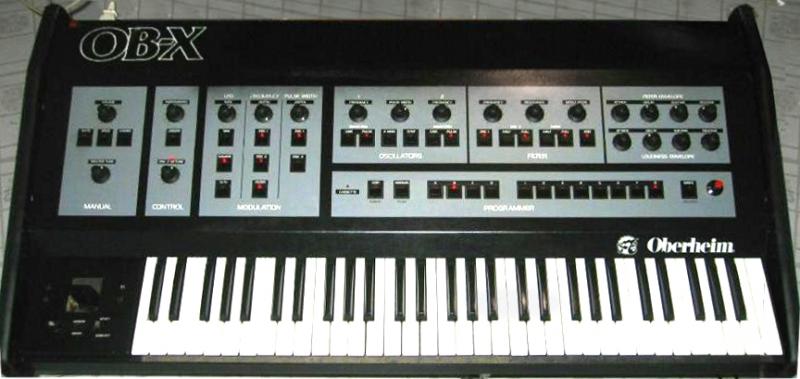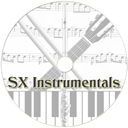Description | The Oberheim OB-X is an analog polyphonic sound synthesizer.
First commercially available in June 1979, it was introduced to compete with the Sequential Circuits Prophet-5, which had been successfully introduced the year before. About 800 units were produced with moderate success before the OB-X was discontinued in 1981, replaced by the updated and streamlined OB-Xa. The OB line developed and evolved after that with the OB-8 before being replaced by the Matrix series.
The OB-X was the first Oberheim synthesizer based on a single printed circuit board called a "voice card" (still using mostly discrete components) rather than the earlier SEM (Synthesizer Expander Module) used in Oberheim semi-modular systems, which had required multiple modules to achieve polyphony. The synthesizer's built-in Z-80 microprocessor also automated the tuning process. This made the OB-X less laborious to program, more functional for live performance, and more portable than its ancestors.
The "X" in OB-X originally stood for the number of voice-cards (notes of polyphony) installed. It came in four, six, and eight-voice models with polyphonic portamento, and sample and hold. Even the 4-voice model was expensive at US$4,595. The entire range used "paddle" levers for pitch and modulation, Oberheim's answer to the "wheel" controls of the Prophet-5. Though these controls were never as popular as the standard pitch and modulation wheels, the philosophy was to mimic the motion of a guitar player bending the strings on their guitar. On most other synthesizers the pitch bend wheel was on the left, and the modulation wheel to the right of it; on the OB-X Oberheim placed them in the opposite relative positions. In addition to this unique configuration the polarity of the paddles was distinctive; the player would pull back on the pitch lever to bend the pitch sharp, and push forward to bend flat.
It featured a 2 pole VCF lowpass filter with its own ADSR, a VCA with ADSR, a flexible LFO section, polyphonic sample and hold, polyphonic portamento and 32 patches of memory. Capable of lush analog synth sounds comparable to the Sequential Prophet 5. The OB-X also gives you Polymod functionality, something that the OB-Xa and OB-8 do not have.
|



